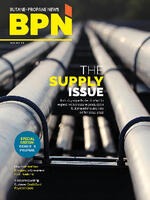
It’s a stark reality: Propane prices are higher and inventories are lower than they’ve been in years. In fact, a June 24 Bloomberg headline trumpeted, “U.S. Propane Prices Are Skyrocketing in a Rare Summer Rally,” noting that propane prices had topped $1 per gallon in June for the first time since 2014. Not long after, a Wall Street Journal article published July 2 reported that domestic propane inventories are 17% less than a year ago and about 15% below the five-year average.
This year’s high prices and depleted inventories remind some longtime marketers of the winters of 2013/2014 and 2017/2018 and the challenges that resulted from them.
What’s causing today’s scenario? A number of factors — including, of course, the pandemic, which drastically reduced global demand, causing commodity pricing to plummet. That, in turn, caused production to decrease, to allow the world to work off excess global inventories.
Since the vaccine rollout, people have begun to resume normal lives, increasing demand across the board for all hydrocarbons while production has continued to remain lower than pre-pandemic levels. At the same time, OPEC+ continues to maintain reduced production levels while United States producers have been slow to return drilling rigs as they focus on capital discipline to shore up their balance sheets and reduce debt. This is causing record low summer inventories in the U.S. relative to global demand, resulting in a totally new set of fundamentals that are dramatically different than we have seen in the past.
As a result of 2020’s spike in winter demand — particularly in both Asia and Europe — many central governments have already started preparing for this upcoming winter well in advance. They’ve told their respective energy companies to make sure they are not caught short again like last year.
These central governments, particularly in Asia, are making sure they are well stocked with liquified petroleum gases (LPGs) and liquified natural gases (LNGs) going into the winter, having already booked shipments for the winter time frame. They are basically taking every bit of LPGs and LNGs they can get their hands on, and they won’t stop until they’re full. So, ships are loading up in the U.S. and pointing east toward Europe and west toward Asia.
This early, global pre-buying is causing all propane and butane markets to be backward in the third and fourth quarters of this year, which is, in turn, causing companies to not store nearly as much product in the summer as needed for the upcoming winter.
As if those factors aren’t enough to make propane marketers nervous going into this winter, Chris Roth, Crestwood’s vice president, East Marketing and Supply, sees additional supply risks due to higher flat price and backwardation in the forward curve (lower prices expected in future months).
“Higher propane prices require significantly more capital and create cash flow constraints when it comes to storing barrels from summer into winter,” said Roth. “Additionally, with a ‘backward-forward price curve,’ there is no incentive and too much risk for suppliers to store barrels. That means few, if any, ‘wet’ contingency barrels will be available for immediate access, as is typically available in times of peak demand and/or supply disruptions unless consumers take action today.”
What does all of this mean for propane marketers? Supply could get really tight in the U.S. if we see even the slightest increase in weather-related demand. There is still time, however, to consider the fundamentals this year and firm up your supply plans, and then be alert to supply issues that may arise earlier than normal this year.
Establishing a Solid Supply Plan
Given all of these factors setting the stage for this winter, let’s walk through some key steps to developing a supply plan for your operation:
- Start by analyzing your customer base. What will your customers need? It’s best to take an analytical approach, using data from the past few years and spanning different weather and economic situations.
- Identify the number of gallons you typically sell during the winter months, broken out by week and month.
- Assess your customers’ buying behavior, considering early-fill customers, those who choose your fixed-price option, the needs of your large commercial accounts, etc.
- Consider the impact of energy conservation and/or energy efficiency. Are your customers lowering their thermostats or taking other measures to conserve energy?
- Evaluate your local economy. How is it faring following the pandemic? Is unemployment high or does your local community seem to be bouncing back fairly quickly?
- Know the available storage in your secondary and tertiary tanks. Can you accurately calculate the amount of empty storage in your system? Plan to fill early and often to make sure all tanks are full. This will dramatically lessen the impact of any supply disruptions which typically occur to varying degrees during the winter.
- Factor Mother Nature into your assumptions. Study weather patterns from the last few years and do your homework to find reliable, long-term forecasts. Use an average winter’s weather as a baseline — bracketed at the top by your coldest winter in recent years and at the bottom by your warmest winter in recent years — then correlate propane volumes for a range of possible outcomes. Although weather can always be unpredictable, study the patterns from the last few years and consider reliable, long-term forecasts.
- Don’t overlook weather events that meteorologists are predicting. Remember Winter Storm Uri that walloped Texas this year? According to Bryon Muchow, Crestwood’s vice president of mid-continent supply and marketing, forecasts gave about a two-week notice of the below normal temps. Because of the lack of heating degree days prior to February, most retailers had the tanks in the field on the top side and were prepared for some winter weather. Once the system turned into a major winter event now known as Uri, the mid-continent market reacted quickly, bringing additional barrels into the market and working with customers to ratably deliver gallons to ensure everyone had adequate supply during the storm.
- Put a contingency plan in place. Muchow said, “The challenges caused by Uri last year help to validate the need for marketers to build contingency plans into their yearly supply ‘blueprint.’ And once that blueprint is in place, continue to work closely with your suppliers to monitor those plans throughout the winter months, meeting your agreed-upon contract amounts, regardless of what Mother Nature does.”
- Tailor your supply chain. After you have analyzed your customer base and considered the impact of weather on your supply plans, spend time with your suppliers planning for your market.
- Diversify your supply points. Make sure you don’t have all of your eggs in one basket. Consider working with suppliers that offer different supply points and sources so that if one source has challenges getting a delivery of product, you’ll have access to supply from other locations. It may cost you a few additional pennies, but having propane when you need it is worth a few cents.
- Cultivate supplier relationships. You’ll need your suppliers to come through for you in the winter, so it’s important to develop a solid working relationship in advance. Planning ahead, entering into supply agreements and buying on schedule builds equity with wholesalers. That way, when you’re in need of supply in the middle of winter, you’ll have earned allocations.
- Focus on trucking. Trucking is often the first link in the supply chain to break, so having enough transports and bobtails staffed with qualified drivers is a must-do for a successful winter ahead.
Plan Ahead, Be Aware of Higher Prices & Stay Alert
This upcoming winter is likely to be a challenging one. Given today’s high prices and low inventories, a lot of factors will be in play. As a result, it will be in every marketer’s best interest to plan ahead (sitting down soon with your suppliers to create a plan), then commit to staying on top of what’s happening in the industry, both from a global and local perspective. Planning ahead and thinking about the market differently this year will not only get you through the winter, but it will also help you keep your customers happy, minimize any disruptions and make for a smooth and profitable winter.


